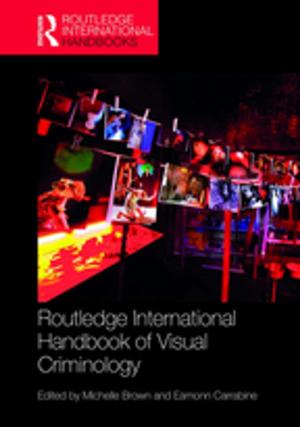| Author: | ISBN: | 9781134055302 | |
| Publisher: | Taylor and Francis | Publication: | June 26, 2013 |
| Imprint: | Routledge | Language: | English |
| Author: | |
| ISBN: | 9781134055302 |
| Publisher: | Taylor and Francis |
| Publication: | June 26, 2013 |
| Imprint: | Routledge |
| Language: | English |
The Etruscans can be shown to have made significant, and in some cases perhaps the first, technical advances in the central and northern Mediterranean. To the Etruscan people we can attribute such developments as the tie-beam truss in large wooden structures, surveying and engineering drainage and water tunnels, the development of the foresail for fast long-distance sailing vessels, fine techniques of metal production and other pyrotechnology, post-mortem C-sections in medicine, and more. In art, many technical and iconographic developments, although they certainly happened first in Greece or the Near East, are first seen in extant Etruscan works, preserved in the lavish tombs and goods of Etruscan aristocrats. These include early portraiture, the first full-length painted portrait, the first perspective view of a human figure in monumental art, specialized techniques of bronze-casting, and reduction-fired pottery (the bucchero phenomenon). Etruscan contacts, through trade, treaty and intermarriage, linked their culture with Sardinia, Corsica and Sicily, with the Italic tribes of the peninsula, and with the Near Eastern kingdoms, Greece and the Greek colonial world, Iberia, Gaul and the Punic network of North Africa, and influenced the cultures of northern Europe.
In the past fifteen years striking advances have been made in scholarship and research techniques for Etruscan Studies. Archaeological and scientific discoveries have changed our picture of the Etruscans and furnished us with new, specialized information. Thanks to the work of dozens of international scholars, it is now possible to discuss topics of interest that could never before be researched, such as Etruscan mining and metallurgy, textile production, foods and agriculture. In this volume, over 60 experts provide insights into all these aspects of Etruscan culture, and more, with many contributions available in English for the first time to allow the reader access to research that may not otherwise be available to them. Lavishly illustrated, The Etruscan World brings to life the culture and material past of the Etruscans and highlights key points of development in research, making it essential reading for researchers, academics and students of this fascinating civilization.
The Etruscans can be shown to have made significant, and in some cases perhaps the first, technical advances in the central and northern Mediterranean. To the Etruscan people we can attribute such developments as the tie-beam truss in large wooden structures, surveying and engineering drainage and water tunnels, the development of the foresail for fast long-distance sailing vessels, fine techniques of metal production and other pyrotechnology, post-mortem C-sections in medicine, and more. In art, many technical and iconographic developments, although they certainly happened first in Greece or the Near East, are first seen in extant Etruscan works, preserved in the lavish tombs and goods of Etruscan aristocrats. These include early portraiture, the first full-length painted portrait, the first perspective view of a human figure in monumental art, specialized techniques of bronze-casting, and reduction-fired pottery (the bucchero phenomenon). Etruscan contacts, through trade, treaty and intermarriage, linked their culture with Sardinia, Corsica and Sicily, with the Italic tribes of the peninsula, and with the Near Eastern kingdoms, Greece and the Greek colonial world, Iberia, Gaul and the Punic network of North Africa, and influenced the cultures of northern Europe.
In the past fifteen years striking advances have been made in scholarship and research techniques for Etruscan Studies. Archaeological and scientific discoveries have changed our picture of the Etruscans and furnished us with new, specialized information. Thanks to the work of dozens of international scholars, it is now possible to discuss topics of interest that could never before be researched, such as Etruscan mining and metallurgy, textile production, foods and agriculture. In this volume, over 60 experts provide insights into all these aspects of Etruscan culture, and more, with many contributions available in English for the first time to allow the reader access to research that may not otherwise be available to them. Lavishly illustrated, The Etruscan World brings to life the culture and material past of the Etruscans and highlights key points of development in research, making it essential reading for researchers, academics and students of this fascinating civilization.















